
 TECHSPEC® components are designed, specified, or manufactured by Edmund Optics. Learn More
TECHSPEC® components are designed, specified, or manufactured by Edmund Optics. Learn More
Les Lentilles Cylindriques Qualité Laser à Large Bande TECHSPEC® présentent des spécifications de précision pour les applications les plus exigeantes. Ces lentilles sont fabriquées en silice fondue de qualité supérieure et sont conçues pour des applications laser avec une qualité de surface de 20-10. Les Lentilles Cylindriques Qualité Laser à Large Bande TECHSPEC® présentent des tolérances étroites, généralement inférieures à 3 arcmin dans toutes les dimensions. L'intégration de ces lentilles est facilitée par des facteurs de forme carrée permettant des options de montage pratiques.
| FUSED SILICA | |
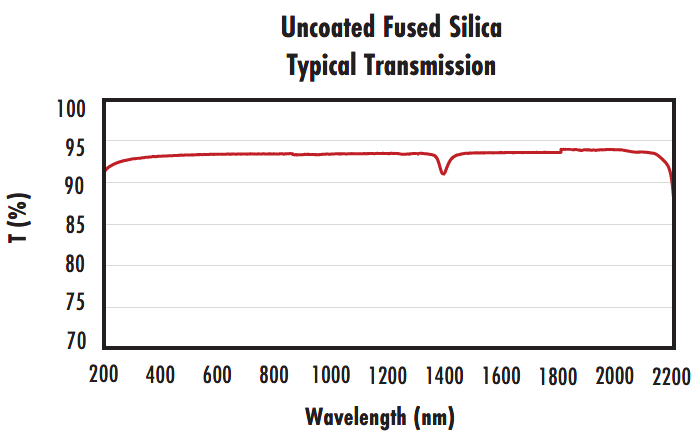 |
Typical transmission of an uncoated fused silica window across the UV - NIR spectra. |
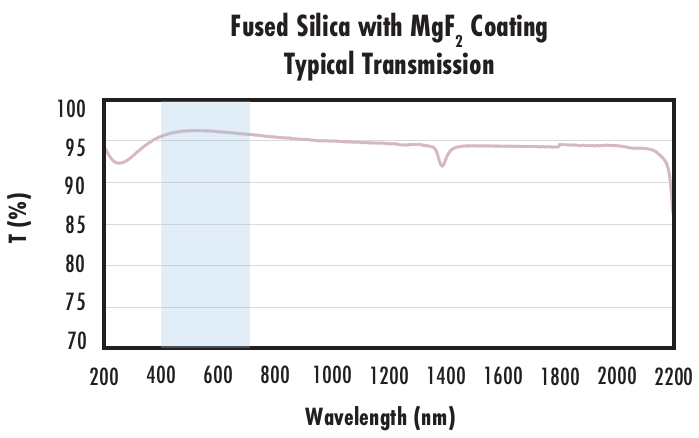 |
Typical transmission of a fused silica window with MgF2 (400-700nm) coating at 0° AOI. The blue shaded region indicates the coating design wavelengh range, with the following specification: Ravg ≤ 1.75% @ 400 - 700nm (N-BK7) Data outside this range is not guaranteed and is for reference only. |
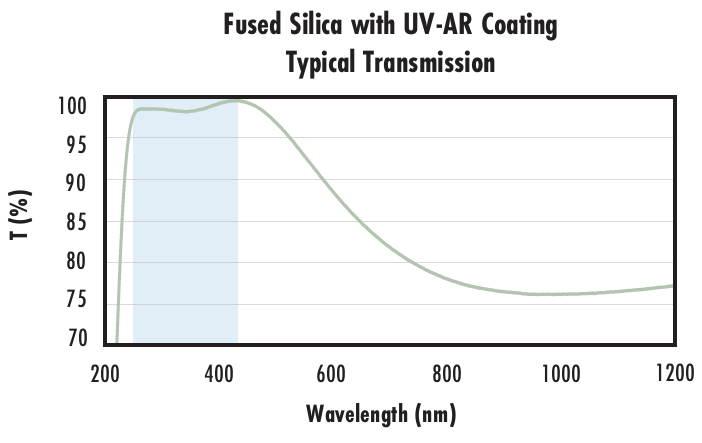 |
Typical transmission of a fused silica window with UV-AR (250-425nm) coating at 0° AOI. The blue shaded region indicates the coating design wavelengh range, with the following specification: Rabs ≤ 1.0% @ 250 - 425nm Data outside this range is not guaranteed and is for reference only. |
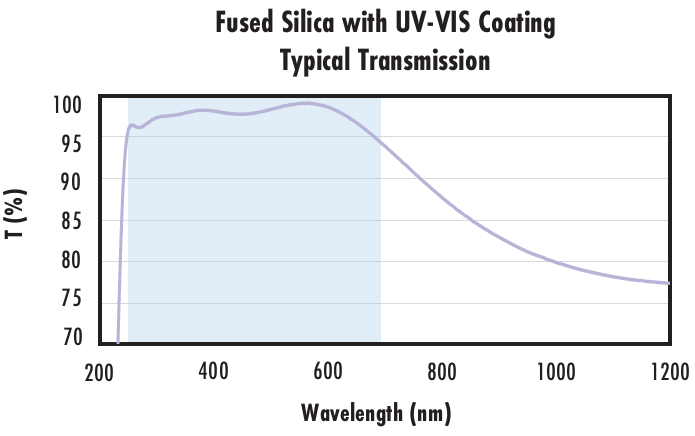 |
Typical transmission of a fused silica window with UV-VIS (250-700nm) coating at 0° AOI. The blue shaded region indicates the coating design wavelengh range, with the following specification: Rabs ≤ 1.0% @ 350 - 450nm Data outside this range is not guaranteed and is for reference only. |
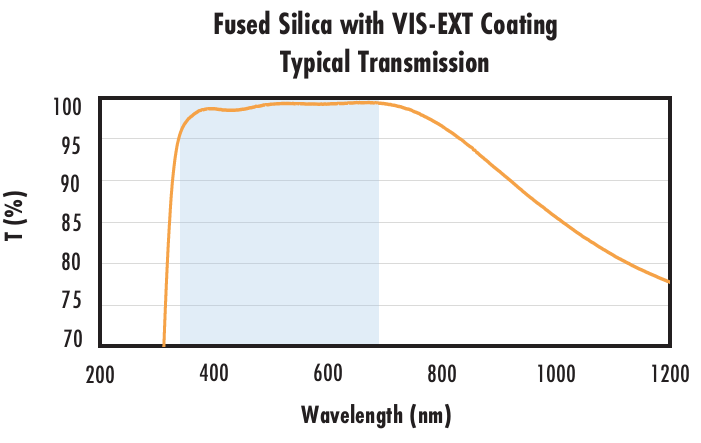 |
Typical transmission of a fused silica window with VIS-EXT (350-700nm) coating at 0° AOI. The blue shaded region indicates the coating design wavelengh range, with the following specification: Ravg ≤ 0.5% @ 350 - 700nm Data outside this range is not guaranteed and is for reference only. |
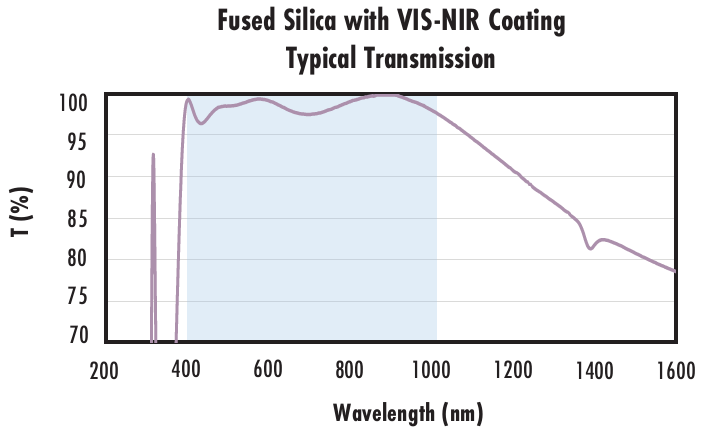 |
Typical transmission of a fused silica window with VIS-NIR (400-1000nm) coating at 0° AOI. The blue shaded region indicates the coating design wavelengh range, with the following specification: Rabs ≤ 0.25% @ 880nm Data outside this range is not guaranteed and is for reference only. |
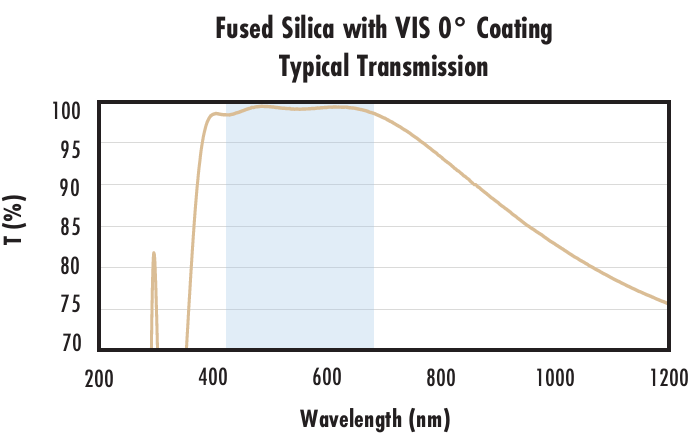 |
Typical transmission of a fused silica window with VIS 0° (425-675nm) coating at 0° AOI. The blue shaded region indicates the coating design wavelengh range, with the following specification: Ravg ≤ 0.4% @ 425 - 675nm Data outside this range is not guaranteed and is for reference only. |
 |
Typical transmission of a fused silica window with YAG-BBAR (500-1100nm) coating at 0° AOI. The blue shaded region indicates the coating design wavelengh range, with the following specification: Rabs ≤ 0.25% @ 532nm Data outside this range is not guaranteed and is for reference only. |
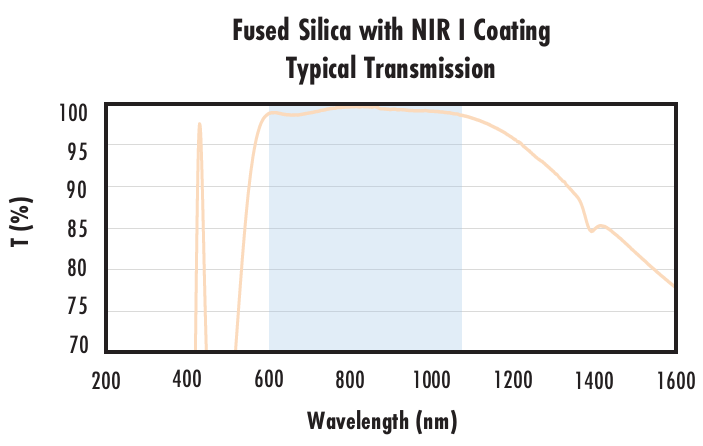 |
Typical transmission of a fused silica window with NIR I (600 - 1050nm) coating at 0° AOI. The blue shaded region indicates the coating design wavelengh range, with the following specification: Ravg ≤ 0.5% @ 600 - 1050nm Data outside this range is not guaranteed and is for reference only. |
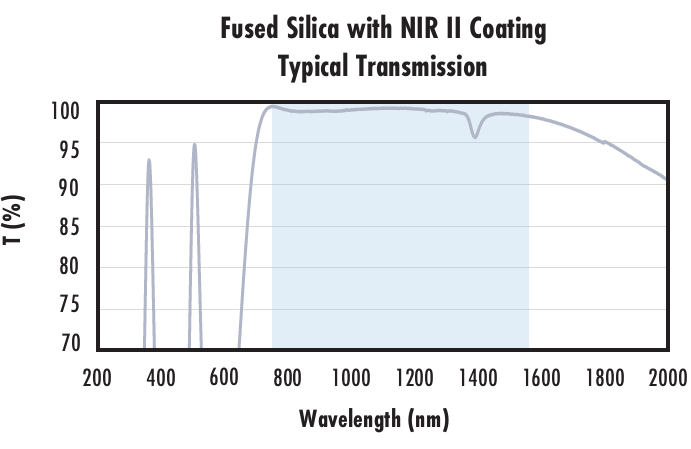 |
Typical transmission of a fused silica window with NIR II (750 - 1550nm) coating at 0° AOI. The blue shaded region indicates the coating design wavelengh range, with the following specification: Rabs ≤ 1.5% @ 750 - 800nm Data outside this range is not guaranteed and is for reference only. |
1-800-363-1992
ou consulter les numéros d’autres pays
facile à utiliser
entrer les numéros de stock pour commencer
Copyright 2025 | Edmund Optics, Ltd Unit 1, Opus Avenue, Nether Poppleton, York, YO26 6BL, UK
L'entreprise Edmund Optics GmbH en Allemagne agit comme un mandataire d'Edmund Optics Ltd au Royaume-Uni. Le titulaire du contrat est Edmund Optics Ltd au Royaume-Uni.